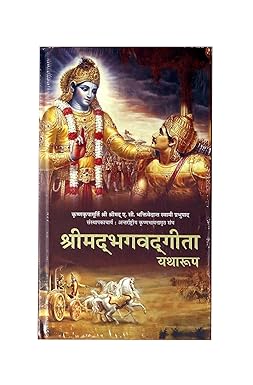-
Somnath Temple, Veraval: One of the twelve Jyotirlinga temples dedicated to Lord Shiva, located on the coast of the Arabian Sea.
-
Akshardham Temple, Gandhinagar: An intricate and grand Swaminarayan temple complex known for its architectural beauty and cultural displays.
-
Dwarkadhish Temple, Dwarka: Dedicated to Lord Krishna, this temple is part of the Char Dham Yatra and a significant pilgrimage site.
-
Ambaji Temple, Banaskantha: Dedicated to Goddess Amba, this temple is visited by devotees from across the country.
-
Palitana Temples, Bhavnagar: A complex of over 800 Jain temples on Shatrunjaya Hill, an important pilgrimage site for Jains.
-
Siddhivinayak Temple, Ahmedabad: Dedicated to Lord Ganesha, this temple is famous for its association with the elephant-headed deity.
-
Akshardham Temple, Gandhinagar: This Swaminarayan temple complex is known for its intricate architecture, serene atmosphere, and cultural exhibits.
-
Modhera Sun Temple, Mehsana: An ancient temple dedicated to the Sun God, known for its intricate carvings and the Modhera Dance Festival.
-
Rukmini Devi Temple, Dwarka: Dedicated to Rukmini, the consort of Lord Krishna, this temple is located near Dwarkadhish Temple.
-
Chamundeshwari Temple, Chotila: Dedicated to Goddess Chamundeshwari, this temple is perched on a hill and offers panoramic views.
-
Bala Hanuman Temple, Jamnagar: Known for its continuous Akhand Ramdhun (continuous chanting of Lord Rama's name) for several decades.
-
Kirti Mandir, Porbandar: Birthplace of Mahatma Gandhi, this temple honors his memory and teachings.
-
Bhalka Tirtha, Veraval: The place where Lord Krishna is believed to have been hit by an arrow, leading to his departure from the mortal world.
-
Nageshwar Jyotirlinga Temple, Dwarka: Dedicated to Lord Shiva, this temple houses one of the twelve Jyotirlingas.
-
Harsidhhi Mata Temple, Kutch: A temple dedicated to Goddess Harsidhhi, visited by devotees for blessings and wishes.
Overview of Famous Temples in Gujarat
Introduction
Gujarat is home to many renowned temples that showcase rich cultural, spiritual, and architectural heritage.
Historical Significance
Temples in Gujarat date back centuries and reflect the state’s long-standing religious and cultural traditions.
Religious Importance
These temples are sacred spaces for devotees, hosting daily prayers, festivals, and rituals throughout the year.
Geographical Distribution
Famous temples are spread across Gujarat, from Ahmedabad and Vadodara to smaller towns and pilgrimage sites.
Spiritual Practices
Devotees engage in rituals like aarti, abhishekam, chanting, and participation in festivals at these temples.
Major Temples
Somnath Temple
One of the twelve Jyotirlingas, Somnath Temple is a significant pilgrimage site known for its grandeur and historical resilience.
Ranakpur Jain Temple
Famous for its exquisite marble architecture, the Ranakpur Jain Temple attracts devotees and tourists alike.
Akshardham Temple Gandhinagar
Dedicated to Bhagwan Swaminarayan, this modern temple complex showcases Indian art, culture, and spirituality.
Ambaji Temple
Ambaji Temple, one of the Shakti Peethas, is highly revered and draws thousands of devotees, especially during the Bhadarvi Poonam festival.
Bhadreshwar Jain Temple
Located in Kutch, this ancient temple is famous for its intricate carvings and long-standing spiritual significance.
Architecture & Cultural Heritage
Temple Architecture
Temples in Gujarat showcase unique architectural styles, including Maru-Gurjara, Solanki, and modern interpretations.
Sculptures & Carvings
Intricate sculptures of deities, mythical creatures, and floral designs adorn temple walls and sanctums.
Temple Complexes
Many temple complexes include sanctums, courtyards, gardens, and halls for cultural events and pilgrim accommodation.
Cultural Significance
These temples are custodians of Gujarat’s cultural and spiritual heritage, preserving rituals, festivals, and traditional arts.
Preservation & Tourism
Efforts by authorities and devotees ensure preservation of temples while promoting cultural and religious tourism.
Festivals & Rituals
Major Festivals
Temples celebrate festivals like Navratri, Diwali, Mahashivratri, and Kartik Purnima with great fervor and community participation.
Daily Worship & Aarti
Daily rituals include aarti, chanting, and offerings, providing spiritual experiences for devotees.
Special Poojas & Offerings
Special poojas on auspicious days draw large crowds and reinforce the spiritual significance of the temples.
Community Participation
Festivals and rituals encourage community bonding and collective celebration of faith and culture.
Spiritual Learning
Temples offer teachings, discourses, and spiritual guidance for devotees seeking knowledge of scriptures and religious practices.
Pilgrimage Planning & Tips
Travel & Accessibility
Temples are accessible by road, rail, and nearby airports, with clear directions for visitors and pilgrims.
Accommodation & Stay
Nearby hotels, guesthouses, and dharamshalas provide lodging options for pilgrims and tourists.
Best Time to Visit
Festivals and winter months offer the best experience for visiting temples in Gujarat with pleasant weather and vibrant celebrations.
Devotional Etiquette
Visitors should respect temple customs, maintain proper attire, and follow guidelines while visiting sacred spaces.
Photography & Documentation
Photography is allowed in some areas; visitors should respect temple rules while capturing the beauty of architecture and rituals.
Gujarat is home to many renowned temples that showcase rich cultural, spiritual, and architectural heritage.
Temples in Gujarat date back centuries and reflect the state’s long-standing religious and cultural traditions.
These temples are sacred spaces for devotees, hosting daily prayers, festivals, and rituals throughout the year.
Famous temples are spread across Gujarat, from Ahmedabad and Vadodara to smaller towns and pilgrimage sites.
Devotees engage in rituals like aarti, abhishekam, chanting, and participation in festivals at these temples.
One of the twelve Jyotirlingas, Somnath Temple is a significant pilgrimage site known for its grandeur and historical resilience.
Famous for its exquisite marble architecture, the Ranakpur Jain Temple attracts devotees and tourists alike.
Dedicated to Bhagwan Swaminarayan, this modern temple complex showcases Indian art, culture, and spirituality.
Ambaji Temple, one of the Shakti Peethas, is highly revered and draws thousands of devotees, especially during the Bhadarvi Poonam festival.
Located in Kutch, this ancient temple is famous for its intricate carvings and long-standing spiritual significance.
Temples in Gujarat showcase unique architectural styles, including Maru-Gurjara, Solanki, and modern interpretations.
Intricate sculptures of deities, mythical creatures, and floral designs adorn temple walls and sanctums.
Many temple complexes include sanctums, courtyards, gardens, and halls for cultural events and pilgrim accommodation.
These temples are custodians of Gujarat’s cultural and spiritual heritage, preserving rituals, festivals, and traditional arts.
Efforts by authorities and devotees ensure preservation of temples while promoting cultural and religious tourism.
Temples celebrate festivals like Navratri, Diwali, Mahashivratri, and Kartik Purnima with great fervor and community participation.
Daily rituals include aarti, chanting, and offerings, providing spiritual experiences for devotees.
Special poojas on auspicious days draw large crowds and reinforce the spiritual significance of the temples.
Festivals and rituals encourage community bonding and collective celebration of faith and culture.
Temples offer teachings, discourses, and spiritual guidance for devotees seeking knowledge of scriptures and religious practices.
Temples are accessible by road, rail, and nearby airports, with clear directions for visitors and pilgrims.
Nearby hotels, guesthouses, and dharamshalas provide lodging options for pilgrims and tourists.
Festivals and winter months offer the best experience for visiting temples in Gujarat with pleasant weather and vibrant celebrations.
Visitors should respect temple customs, maintain proper attire, and follow guidelines while visiting sacred spaces.
Photography is allowed in some areas; visitors should respect temple rules while capturing the beauty of architecture and rituals.


